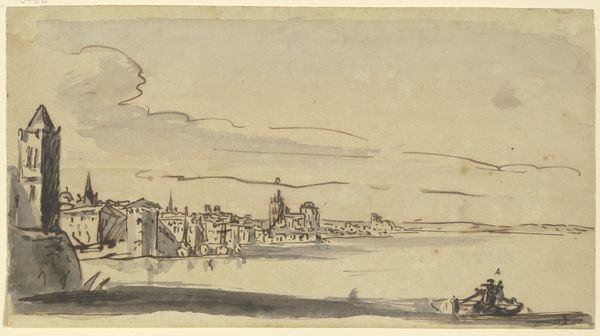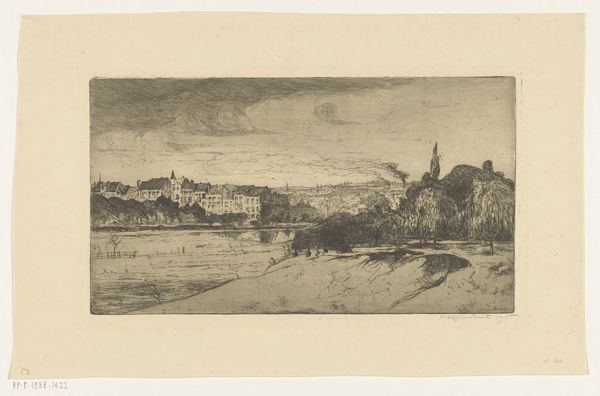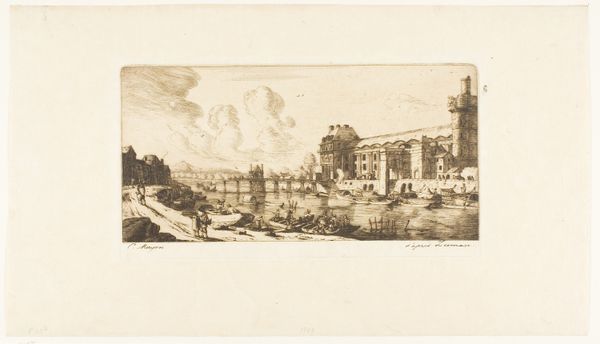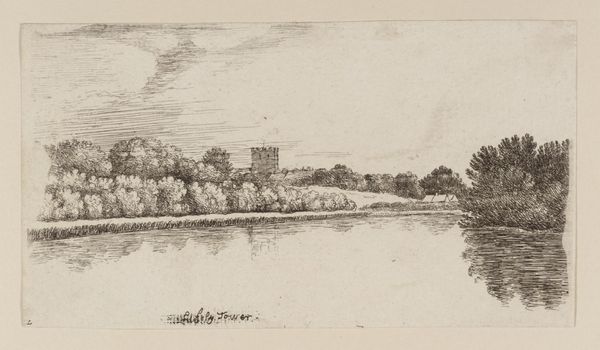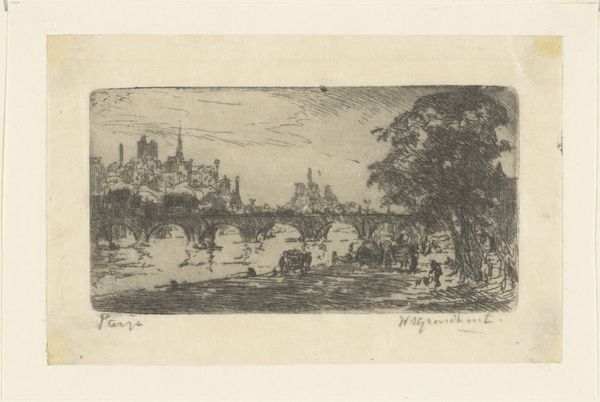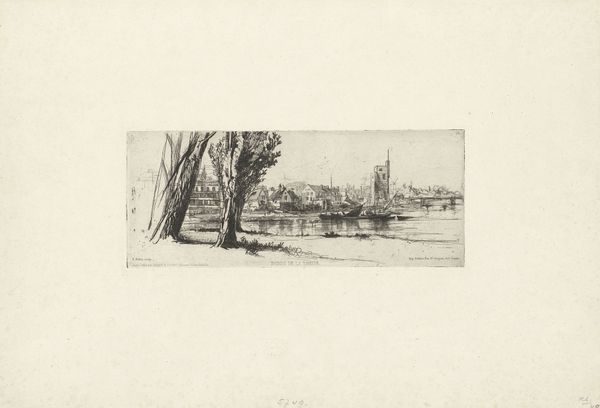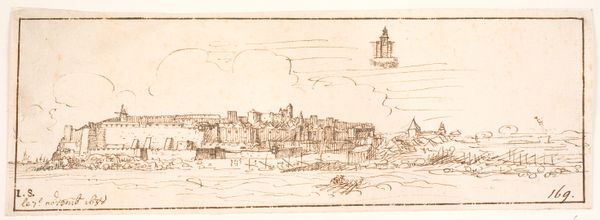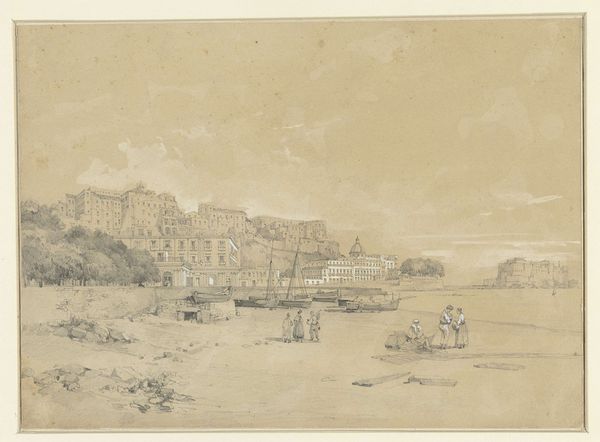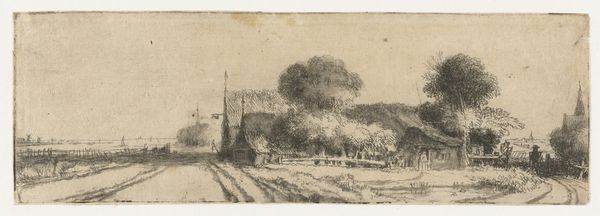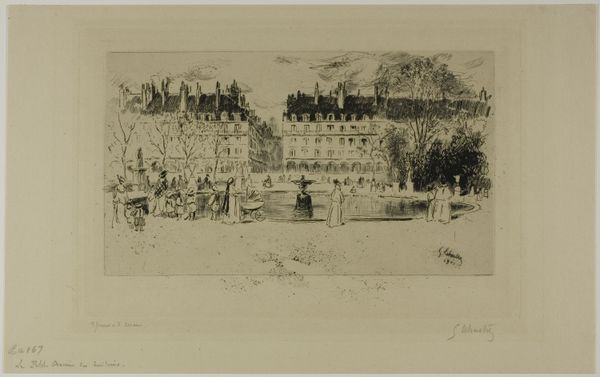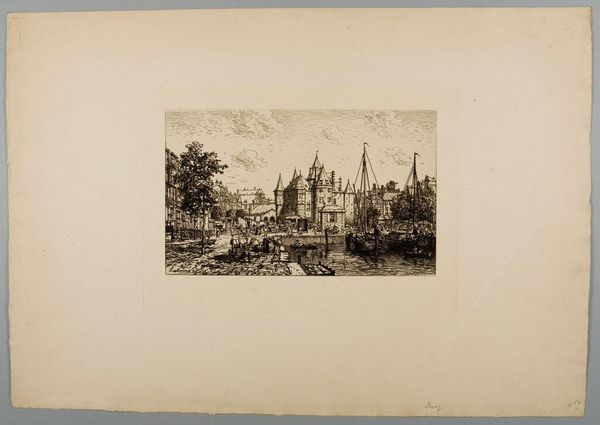
Dimensions: 153 × 281 mm (image); 219 × 318 mm (plate)
Copyright: Public Domain
Editor: So this is Joseph Pennell's "Royal Windsor," an etching from 1903. The detail is just incredible, almost photographic, yet it still has that airy quality of Impressionism. What do you see in this piece? Curator: Well, beyond the purely aesthetic, this image, produced during the height of the British Empire, prompts me to consider power dynamics. Windsor Castle, a potent symbol of monarchy, looms over a manicured landscape. Who had access to this "home park?" Who was excluded? Editor: That's a great point. I was so caught up in the landscape that I hadn't really thought about access or privilege. It just seemed like a pretty view. Curator: Pennell, as an American expatriate, likely held a complex perspective. Was he celebrating British power or critiquing it from a distance? Consider the composition: is the castle a benevolent protector or an imposing force? Does its dominance reflect a societal structure that needed to be challenged? Editor: I see what you mean. The castle definitely dominates the skyline. It does raise questions about class and social hierarchy that I hadn't initially considered. Curator: The etching technique itself speaks to reproduction and accessibility. Prints made art more widely available. However, access to art, even reproduced art, often remained stratified. Editor: That’s fascinating, linking the technique back to social concerns. So, even in its attempt to democratize art, printmaking couldn't fully escape the societal structures of its time. Curator: Precisely. Art, even landscape art, is never truly neutral. Understanding the context reveals the inherent biases and unspoken narratives. Editor: Thanks, that gives me a lot to think about. It's amazing how much context can change your perspective on a piece. Curator: Indeed. Engaging with art history critically allows us to unpack these layers of meaning and connect the past with contemporary struggles for equity and representation.
Comments
No comments
Be the first to comment and join the conversation on the ultimate creative platform.
